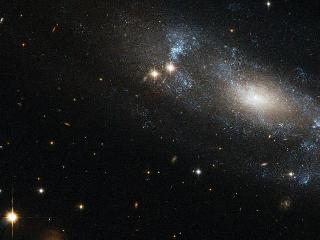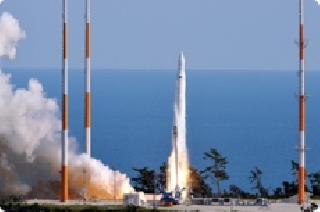
The NASA/ESA Hubble Space Telescope has spotted the spiral galaxy ESO 499-G37, seen here against a backdrop of distant galaxies, scattered with nearby stars. Photo: NASA.
WASHINGTON (PTI): Astronomers claim to have spotted a new loose spiral galaxy filled with gas and dust, using the NASA/ESA Hubble Space Telescope.
The galaxy ESO 499-G37 lies in the southern border of the constellation of Hydra, which is shared with Antlia, NASA said in a statement.
The arms of a spiral galaxy have large amounts of gas and dust, and are often areas where new stars are constantly forming.
The galaxy's most characteristic feature is a bright elongated nucleus. The bulging central core usually contains the highest density of stars in the galaxy, where typically a large group of comparatively cool old stars are packed in this compact, spheroidal region.
One feature common to many spiral galaxies is the presence of a bar running across the center of the galaxy. These bars are thought to act as a mechanism that channels gas from the spiral arms to the center, enhancing the star formation.
Recent studies suggest that ESO 499-G37's nucleus sits within a small bar up to a few hundreds of light-years along, about a tenth the size of a typical galactic bar.
Astronomers think that such small bars could be important in the formation of galactic bulges since they might provide a mechanism for bringing material from the outer regions down to the inner ones.
However, the connection between bars and bulge formation is still not clear since bars are not a universal feature in spiral galaxies.
This was a joint project undertaken by the European Southern Observatory (ESO) and the Uppsala Observatory, which used the ESO 1-metre Schmidt telescope at La Silla Observatory, Chile, to map a large portion of the southern sky looking for stars, galaxies, clusters, and planetary nebulae.
The galaxy was imaged using visible and infrared exposures taken with the Wide Field Channel of the Advanced Camera for Surveys. The field of view is approximately 3.4 arcminutes wide.
 Previous Article
Previous Article Next Article
Next Article












The Indian Air Force, in its flight trials evaluation report submitted before the Defence Ministry l..
view articleAn insight into the Medium Multi-Role Combat Aircraft competition...
view articleSky enthusiasts can now spot the International Space Station (ISS) commanded by Indian-American astr..
view article